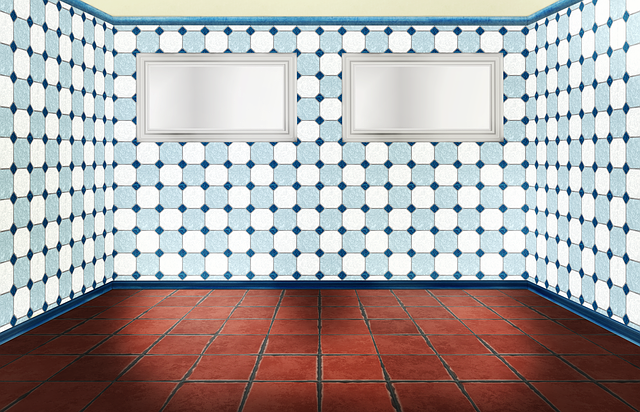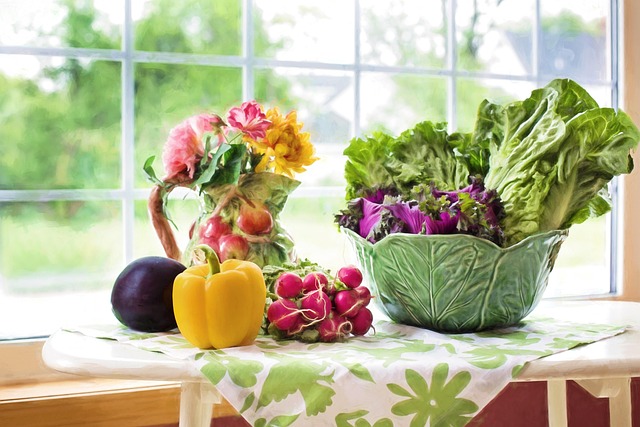To effectively deep clean a kitchen floor, identify its material type (e.g., ceramic tiles, vinyl, hardwood, stone) for tailored care. Gather specific tools and supplies like a vacuum cleaner, mop, floor scrubber, mild floor cleaner, bucket, microfiber cloths, and gloves. Follow steps including sweeping, mixing cleaning solutions, applying them with a mop, scrubbing stains, rinsing, and drying. Use suitable cleaning agents like vinegar, baking soda, or dishwashing liquid for various stains. Implement regular maintenance through daily sweeping, vacuuming, protective coatings, and prompt spill cleanup. Avoid harsh chemicals, leaving floors wet, or tracking marks to prevent damage and prolong floor life. Regular deep cleaning enhances hygiene, safety, and floor longevity while preserving aesthetics.
Tired of a grimy kitchen floor that feels like a never-ending chore? It’s time to unlock a sparkling clean space with our comprehensive guide to deep cleaning your kitchen floor. From understanding your floor type to choosing the right supplies and mastering stain removal, we’ve got you covered. Learn effective maintenance tips, avoid common mistakes, and discover the benefits of regular deep cleaning for a fresh, inviting kitchen environment.
Understanding Your Kitchen Floor Type

Knowing your kitchen floor type is crucial for effective deep cleaning. Different materials require unique care to maintain their beauty and longevity. For instance, ceramic tiles may need a gentle touch with mild detergents, while vinyl floors might withstand stronger solutions. Understanding the porosity and finish of your floor ensures you use suitable cleaning agents, preventing damage.
Whether it’s hardwood, tile, vinyl, or stone, each has distinct characteristics that influence its cleaning approach. Hardwood floors, for example, should be cleaned with minimal water to avoid soaking and potential warping. In contrast, sealed stone floors can handle more aggressive cleaning due to their natural resistance. Identifying your floor type empowers you to tailor your cleaning routine for optimal results in your kitchen floor cleaning efforts.
Gathering the Right Cleaning Supplies

Before diving into the deep cleaning process, ensure you have all the necessary supplies to achieve a sparkling kitchen floor. The right tools make the task quicker and more efficient. For kitchen floor cleaning, you’ll need a good quality vacuum cleaner with a suction head designed for hard floors, as well as a mop suitable for your floor type (some mops are specifically made for tile or wood). You can also invest in a floor scrubber if you have a larger space to cover. Don’t forget the essential cleaning agents – a mild floor cleaner that’s safe for your surface, a bucket, and clean microfiber cloths or sponges. Additionally, protective gear like gloves is beneficial to prevent skin contact with harsh chemicals.
Step-by-Step Deep Cleaning Process

Deep cleaning your kitchen floor is a thorough process that requires a few simple steps. Start by sweeping or vacuuming to remove any loose debris and dirt. This initial step is crucial for preparing the floor and ensuring better absorption of cleaning solutions. Next, mix a solution of warm water and mild detergent in a bucket—a gentle but effective cleaner for most kitchen floors.
Using a mop, apply the solution to your floor, working from one end to the other. Pay special attention to high-traffic areas and any visible stains. Scrub stubborn marks with a soft-bristled brush if needed. After scrubbing, rinse the floor thoroughly with clean water to remove all soap residue. Finally, dry the floor using a clean towel or leave it to air dry, ensuring your kitchen is free from excessive moisture. Regular deep cleaning sessions will keep your kitchen floor in top condition.
Effective Cleaning Solutions for Stains

When it comes to deep cleaning kitchen floors, addressing stains effectively is key to achieving a sparkling result. Start with identifying the type of stain and choosing the right cleaning solution. For example, vinegar and water work wonders on grease and grime, while baking soda mixed with vinegar tackles tough, embedded stains. For stubborn food particles, a mild dishwashing liquid in warm water can be used for a deep clean.
For kitchen floor cleaning, consider using natural or eco-friendly products whenever possible to ensure a safe and healthy environment. Avoid harsh chemicals that may leave behind unpleasant fumes or residues. Regular spot cleaning and prompt removal of spills are essential preventive measures. With the right tools and solutions, deep cleaning your kitchen floors doesn’t have to be a daunting task—it can be a refreshing and satisfying way to refresh your space.
Tips for Maintenance and Prevention

Regular maintenance is key to keeping your kitchen floor in top condition and preventing deep cleaning from becoming a overwhelming task. Start by sweeping or vacuuming your floor daily to remove loose dirt, food debris, and other particles that can lead to staining and buildup. This simple step goes a long way in preserving the look and longevity of your kitchen flooring.
Additionally, consider using protective coatings or sealing agents specifically designed for kitchen floors. These products create a barrier against moisture, grease, and stains, making cleaning much easier. Regularly cleaning spilled liquids promptly and avoiding track marks from frequent foot traffic can also significantly reduce the need for deep cleaning. By combining these preventive measures with consistent, thorough vacuuming and sweeping, you’ll keep your kitchen floor looking fresh and new between deep cleaning sessions.
Common Mistakes to Avoid

Deep cleaning your kitchen floors is a necessary task, but it’s easy to fall into common traps that can leave your hard-surfaced floors looking less than their best. One of the biggest mistakes homeowners make is using the wrong cleaning products. Using harsh chemicals or abrasive cleaners can strip away protective coatings and damage the floor finish, especially on delicate materials like wood or tile. Always opt for gentle, non-toxic cleaners designed specifically for kitchen floor cleaning to avoid this pitfall.
Another frequent error is neglecting to thoroughly dry the floors after cleaning. Water left behind from mopping or steam cleaning can lead to mold, mildew, and even warping over time. After deep cleaning, ensure you wipe down the floors with a dry cloth or allow them to air dry completely before returning any furniture or using the space for regular activities. This simple step is crucial for maintaining the longevity of your kitchen floor.
Benefits of Regular Deep Cleaning

Regular deep cleaning of kitchen floors offers numerous advantages that extend beyond mere aesthetics. By removing embedded dirt, grime, and bacteria, it creates a healthier environment for your family and pets. This is especially important in kitchens, where food preparation takes place, ensuring no cross-contamination or foodborne illnesses.
Moreover, maintaining a clean floor surface can prolong the lifespan of your kitchen flooring. Accumulated debris and oils can damage certain types of floors over time, leading to premature aging or even warping. Regular deep cleaning prevents this by eliminating these substances, preserving the original look and quality of your kitchen floor while also providing a safer and more pleasant space for daily activities.
